Letters from Lodi
An insightful and objective look at viticulture and winemaking from the Lodi
Appellation and the growers and vintners behind these crafts. Told from the
perspective of multi-award winning wine journalist, Randy Caparoso.
Haarmeyer's Lodi wines express sense of place, even when made from the most exotic grapes
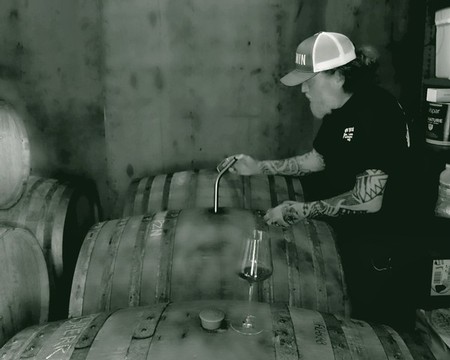
Haarmeyer Wine Cellars winemaker/owner Craig Haarmeyer in his cellar filled with puncheons (double-size barrels)
An orchestra contained in a wine
Let's start by talking about a single Lodi-grown wine, which could very well be the most unusual wine in the world (no exaggeration), before getting to the vintner behind it.
Today's topic of interest is the 2023 Haarmeyer Wine Cellars Victor Weisser, Gemischter Satz ($28), which is a pale gold-colored wine with the faintest rose-tinted hue. It looks like a typical white wine and walks and talks like one—honeyed and floral scents somewhat akin to dianthus (vanillin clove/pepper) and, beneath, a fresh bag of potpourri laced with tobacco leather and dried citrus, with suggestions of honeydew rind.
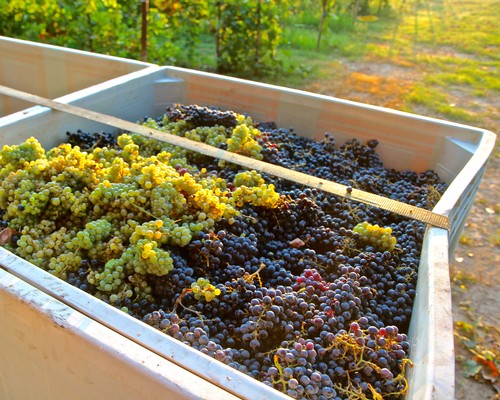
Gemischter Satz-style mixed grape harvest in Mokelumne Glen Vineyards.
On the palate, though, the wine veers off onto a different path: It is bone dry and feathery (12.05% ABV), starting off silky, mildly viscous, and then becomes meaty, almost toothsome in its texturing, finishing with the lightest touch of bitterness like an Italian aperitivo served with twists of lemon peel.
To put it in culinary terms: It is a wine that first suggests fresh, light seafood, like nigiri sushi or ceviche, but then says, "Take that away, I'd rather have roast chicken, pork tonkatsu or veal scallopini." And like anyone who aims to please, that's what you prepare for a wine that starts off like a white wine and then changes its mind and demands a red wine dish.
The most unusual thing about the Victor Weisser, however, is its provenance: Sourced entirely from one riverside vineyard in Lodi called Mokelumne Glen Vineyards, and made from no less than 52 grape varieties of German and Austrian origin; most of these grapes are white wine varieties (such as Riesling, Kerner and Gewürztraminer), but a good percentage of them black-skinned grapes which usually produce red wines (such as Dornfelder, Zweigelt, Bläufrankisch and Spätburguner, a.k.a., Pinot noir). This would be like a chef preparing a dish with 1,000 ingredients.
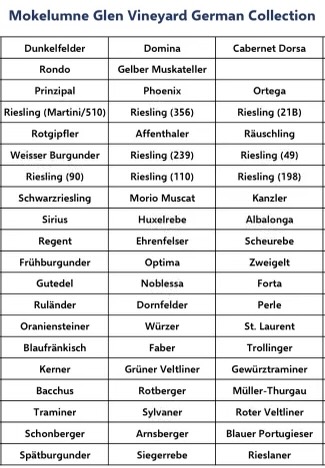
List of Mokelumne Glen Vineyard grapes going into Haarmeyer's Victor Weisser.
Despite its percentage of red wine varieties (approximately 30%), the juice of Victor Weisser's mixed grape lot was basket pressed when it reached the winery, minimizing extraction of color and tannin natural to the black-skinned cultivars. The average sugar reading of the entire pick was 19.8° Brix, which is very low by today's standards in California for table wine production; fermented to complete dryness before spending 5 months in completely neutral oak barrels (that is, previously used, thereby imparting virtually no oak flavor or additional tannin) prior to bottling.
Now, for the terminology: The wine is called Victor Weisser—meaning, simply, "white wine from Victor"—precisely because, as a 52-grape field pick that is fermented all at once as one single lot, it does not represent any single grape variety or "varietal" type. Instead, it represents a taste of the Victor area of Lodi, located on the east side of the city in the crook of an oxbow-shaped bend of the Mokelumne River (some vintners call this sub-area of the Mokelumne River AVA the "Victor Triangle," others "The Peninsula"). A taste that is as fresh and compelling as an airy farmhouse room scented with freshly dried potpourri.
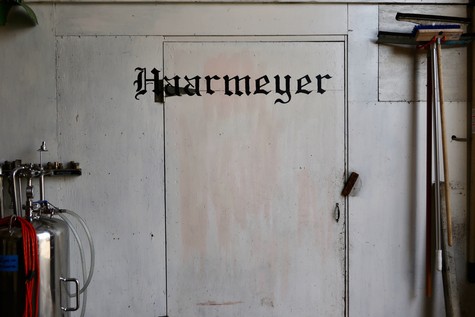
Entryway to Haarmeyer Wine Cellars barrel room.
The label also carries the term Gemischter Satz, which actually borrows (or, I suppose, is "stolen") from the Viennese, Austrian tradition of taking all the different grapes grown in a single vineyard, picking and fermenting them together. There is a great description of this classic regional style in the glossary. Wein. plus, which also quotes an old Austrian proverb, "A grape variety is a violin, but the mixed set is an orchestra."
A Harbor lineage
Haarmeyer Wine Cellars is located in an unassuming old warehouse on Harbor Blvd. in West Sacramento, off Interstate 80. If you're not a regular Sacramento-San Francisco commuter, the reason you would most likely be in that neighborhood is to find its giant-sized IKEA.
The location, though, is important, because it is also the former home of Harbor Winery, founded by the legendary Charles Myers in 1972. When the word "legendary" is used, of course, it is often about individuals of outsized repute, yet are not well known outside the usual circles of "insiders."
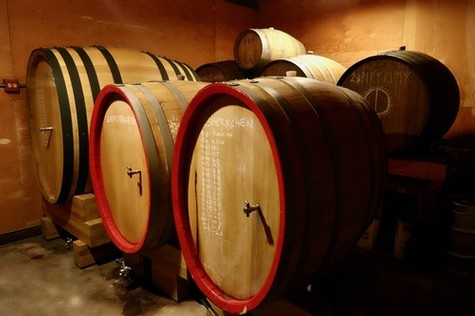
Large oak ovals in Haarmeyer Wine Cellars.
Myers (1929-2015) never made more than a few hundred cases of commercial wine at a time in his life, yet his impact on the California wine industry is humongous because 55 or so years ago he was a key figure turning on a burgeoning California wine industry to (then) forgotten ancient vines in nearby Amador County—grapevines planted as far back as the first five years following the discovery of gold at Sutter's Creek.
In the late 1960s, it was Myers, while still an English instructor at Sacramento City College, who happened to mention to winemaker-friends something to the effect that "good grapes are growing up in those hills." This led to the interest of wineries such as Sutter Home in Amador County grapes, sparking a modest revival of interest in Zinfandel as a wine category, and a few years later, a flood of White Zinfandel in the American market.
But Myers' story is a separate one, which you can read about in many places (start with Comstock's A Man on a Wine Mission). The story of Craig Haarmeyer, the owner/maker of Haarmeyer Wine Cellars, is also somewhat diminutive—the brand produces not more than 3,000 cases each year—yet perhaps, no less consequential. His reputation far exceeds his distribution; most certainly, his quiet, reticent personality.
There is a proverbial geekiness about Haarmeyer—studious, obsessive, compulsive, freakish in his singularity. Hence, he produces wines that do appeal to wine cognoscente with alternative tastes; especially lighter, lower key, pure, and "natural" style wines driven more by acidity and minerality than fruitiness and obsequiousness. Only, Mr. Haarmeyer's are always every bit as fresh, bright, and pristine as even the most cleaned-up commercialized wines. He walks the line.
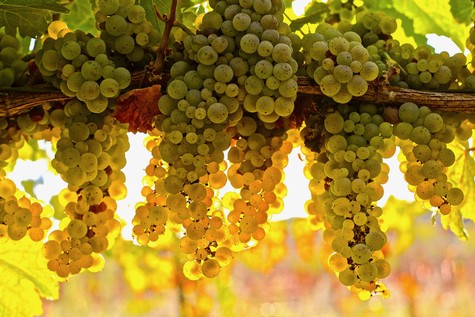
Riesling grapes in Mokelumne Glen Vineyards, one of the backbone grapes of the Haarmeyer Victor Weisser.
Like Myers, for whom Haarmeyer did harvest work during the 1990s, Haarmeyer harbors a consuming interest in disrespected grapes and near-forgotten vineyards. These are the vintners who joust at windmills like book characters born in the wrong century. Translated to wine, vintners explore grapes and entire regions because they are timeless, regardless of contemporary fashion or market dictates.
In fact, if you take a look at the trucker caps worn by Haarmeyer and his loyal team of "cellar hands"—consisting, as it were, of immediate family (wife Kelly, son Alex, and daughter Marian)—you can see that these are custom-made fashionware—emblazoned with "CHENIN," for the grape (Chenin blanc) that remains Haarmeyer's most consuming obsession.
Chenin Blanc as a varietal category in California is at least 40 years removed from its heyday. Lodi growers used to call it "shitty blanc" because they hated growing it due to its tendency to rot. They still rejoice the day when they got to tear it out and replant with better-behaved Chardonnay and Sauvignon Blanc grapes.
Haarmeyer, however, absolutely adores white wines made from Chenin Blanc because of their intrinsically honeyed and floral fragrance and consistently animated acidity. He loves light, zingy white wines that seem to age seemingly forever. The only issue is that there are now far fewer Chenin blanc plantings in California than there are Chardonnay, but the Haarmeyers have managed to find them—including an excellent one on a rocky slope in Lodi's Borden Ranch AVA.
Speaking of which...
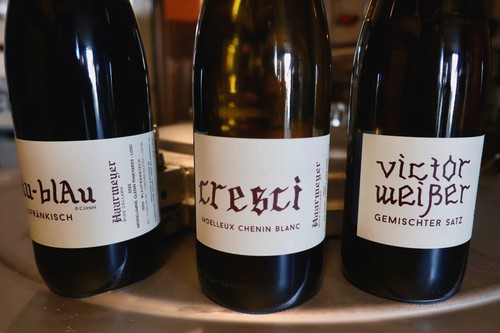
Haarmeyer Wiine Cellars' spring 2024 bottlings: Blau-Blau Blaufränkisch, Cresci Moelleux and Victor Weisser.
Two more of the latest Haarmeyer Wine Cellars releases
One of the challenges of employing natural or "native" yeast fermentation as a standard operating procedure is that, as in all things reliant on the good graces of Mother Nature, it is not predictable. In 2002, Haarmeyer's Chenin blanc lot culled from Palmero Family Vineyard in Borden Ranch-Lodi was chugging along nicely during its fermentation... until it decided to stop. Refusing to ferment entirely to dryness, is Haarmeyer's preferred style.
Hence, the 2022 Haarmeyer Wine Cellars Cresci Moelleux Chenin Blanc ($30)—named after Gerald Cresci, the late Sacramento County wine hobbyist who originally planted the vineyard in 1983 (two or three years before the "Chardonnay boom" in California)—finishes with 23.5 grams of residual sugar. The French use the term moëlleux for white wines that are medium-sweet—somewhere between slightly sweet and a dessert wine-level sweetness.
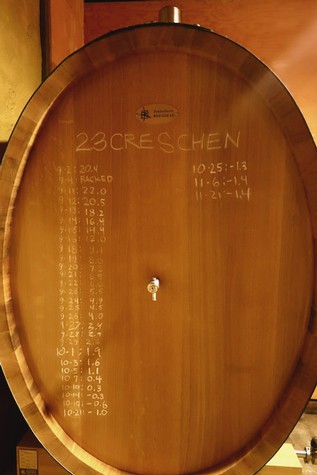
Haarmeyer Cresci Chenin Blanc aging in 1300-hectoliter oak oval.
The Cresci Moelleux may be medium-sweet, but because Haarmeyer picks his grapes on the early side (in 2022, at 21.5° Brix), there is more than enough intrinsic natural acidity to allow the wine to come across as thoroughly fresh, zesty and well balanced, bringing all the more definition to an acutely honeyed nose brimming with honeydew, lemon curd and the animal-like spice of citrus rind.
The feel of the Cresci Moelleux is light (alcohol adding up to just 11.73% ABV), and silky, with an almost briny, palate-slaking sense of minerals. My first sip was with uni (sea urchin) sushi—an almost nirvana-like combination, most likely because of the electrical reaction of the earthy/briny, high umami taste in the seafood to the acid-driven minerality of the wine.
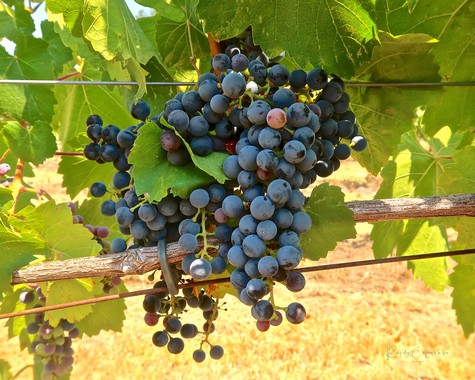
Mokelumne Glen Vineyards Blaufränkisch.
Haarmeyer also produces a slate of Lodi-grown reds. Among the latest, the 2023 Haarmeyer Wine Cellars Blau-Blau Blaufrankisch ($33) is sourced (like the Victor Weisser) from Lodi's Mokelumne Glen Vineyards. While not exactly a household name in America, Blaufränkisch (a.k.a., Lemberger) is a grape that originated in Germany but is of more significant commercial importance in Austria and Slovenia.
The ABV of the 2023 Blau-Blau is a scant 12.56%. An almost antiquated alcohol level, in a world where 14% is considered "light" by today's popular varietal standards (Cabernet Sauvignon, Merlot, Zinfandel, Pinot Noir, etc.). Is it any wonder Haarmeyer has become a brand de résistance among a small yet increasingly fanatical faction of aficionados with a penchant for "natural" style wines, especially those who value nuances of place and grapes well more than perceived wine industry machinations, submission to varietal standardization and a need to rely on high alcohol to flood the senses?
These days, Haarmeyer is not the only one going down this path. There are others taking this approach to the craft, which can be described as being not so much defiant as respectful to what comes naturally in a vineyard. Call it what you will—"Old World," "alternative," "it-is-what-it-is"... "take-it-or-leave-it"—but for more and more wine lovers, it is "plenty enough!"
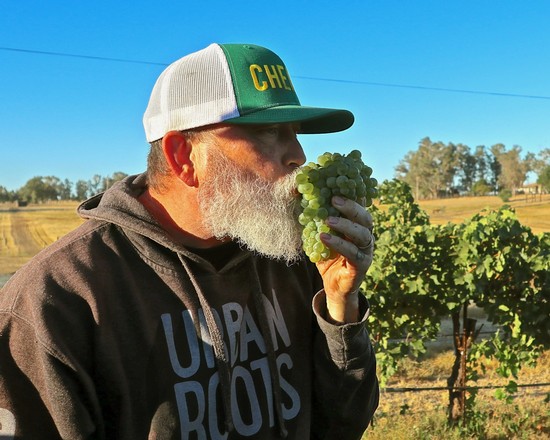
Craig Haarmeyer, donned in his usual CHENIN cap, showing his affection for his favorite grape (Chenin blanc).